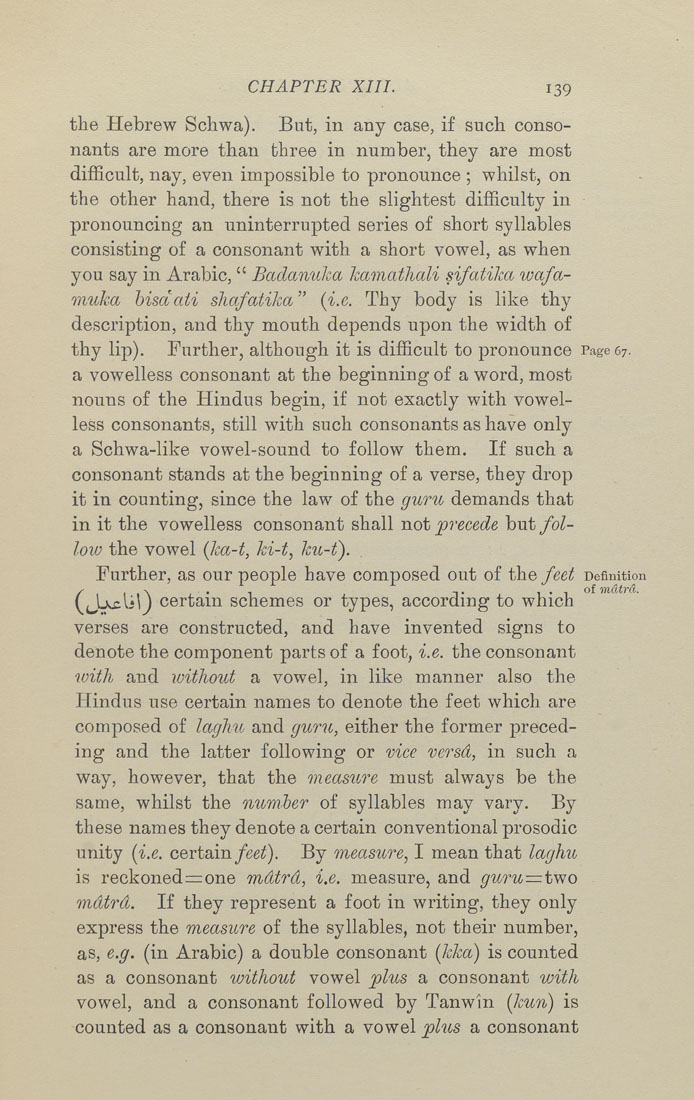CHAPTER XIII. 139
the Hebrew Schwa). But, in any case, if such conso¬
nants are more than three in number, they are most
difficult, nay, even impossible to pronounce ; whilst, on
the other hand, there is not the slightest difficulty in
pronouncing an uninterrupted series of short syllables
consisting of a consonant with a short vowel, as when
you say in Arabic," Badctnuka kamathali sifatika wafa-
muka hisctdti shafatika" (i.e. Thy body is like thy
description, and thy mouth depends upon the width of
thy lip). Further, although it is diflficult to pronounce Page 67.
a vowelless consonant at the beginning of a word, most
nouns of the Hindus begin, if not exactly with vowel¬
less consonants, still with such consonants as have only
a Schwa-like vowel-sound to follow them. If such a
consonant stands at the beginning of a verse, they drop
it in counting, since the law of the guru demands that
in it the vowelless consonant shall not precede hut fol¬
low the vowel (ka-t, ki-t, Icu-t).
Further, as our people have composed out of the feet Definition
(jj^iilil) certain schemes or types, according to which
verses are constructed, and have invented signs to
denote the component parts of a foot, i.e. the consonant
with and without a vowel, in like manner also the
Hindus use certain names to denote the feet which are
composed of laghu and guru, either the former preced¬
ing and the latter following or vice versd, in such a
way, however, that the measure must always be the
same, whilst the number of syllables may vary. By
these names they denote a certain conventional prosodic
unity (i.e. certain feet). By measure, I mean that laghu
is reckoned = one mdtrd, i.e. measure, and guru=two
mdtrd. If they represent a foot in writing, they only
express the measure of the syllables, not their number,
as, e.g. (in Arabic) a double consonant (kka) is counted
as a consonant without vowel plus a consonant with
vowel, and a consonant followed by Tanwin (kun) is
counted as a consonant with a vowel plus a consonant
|








